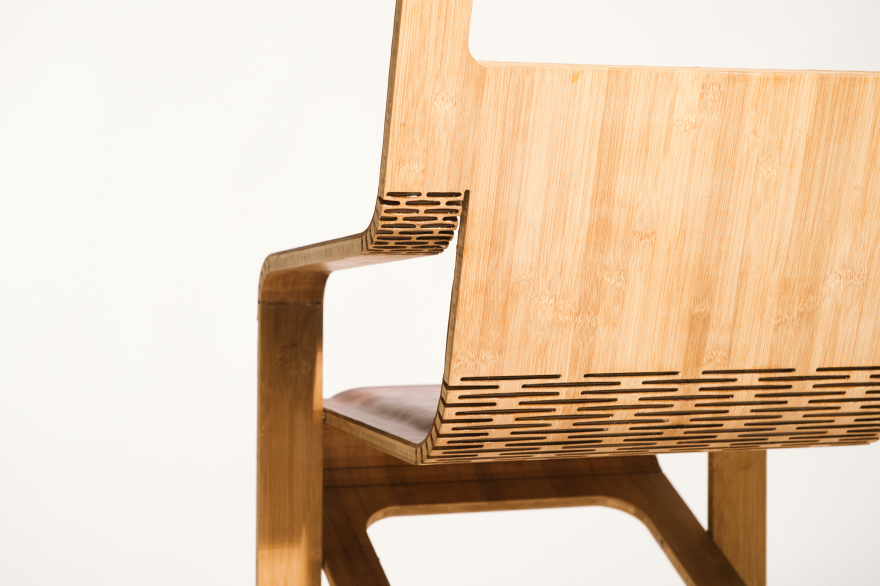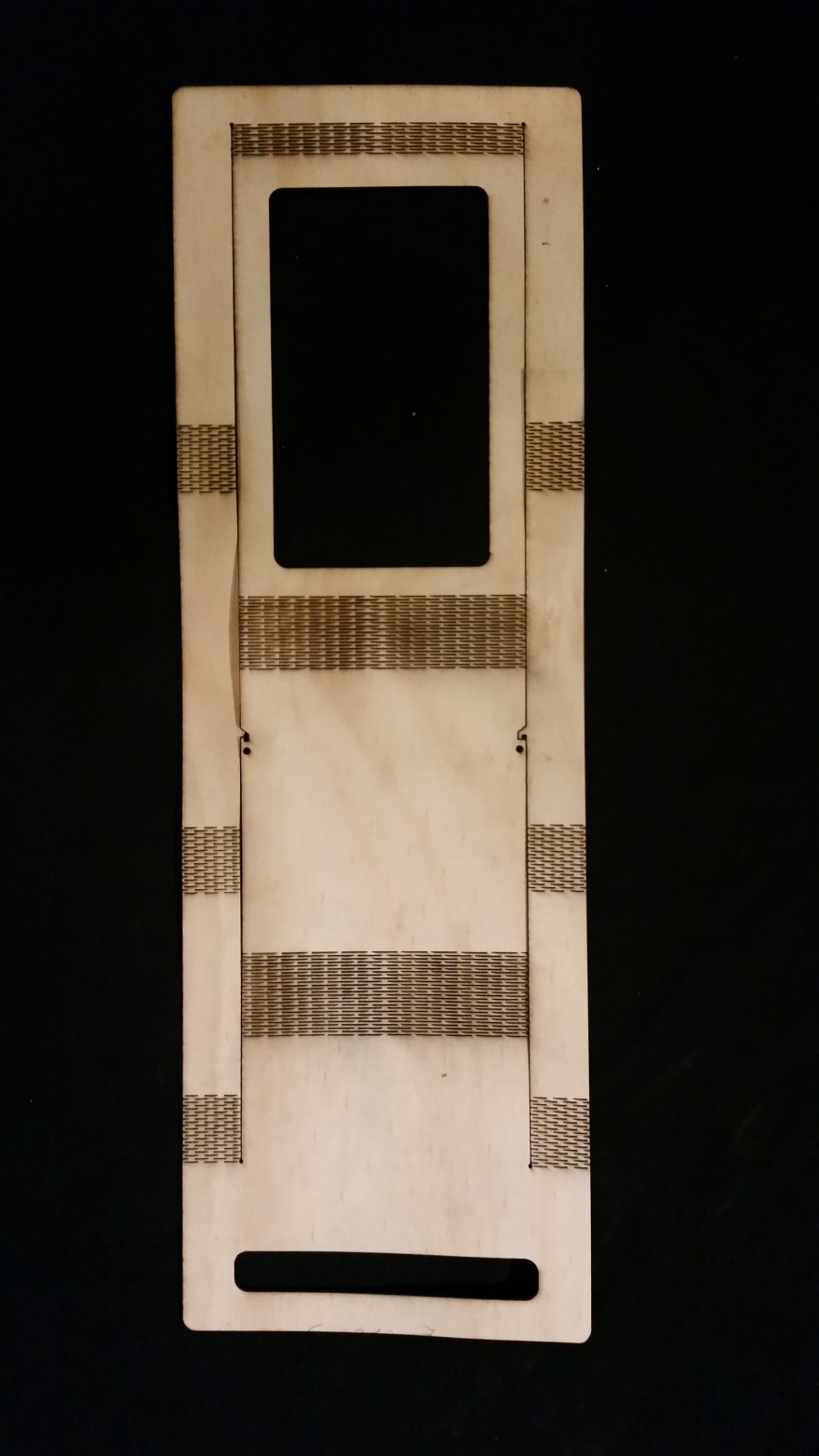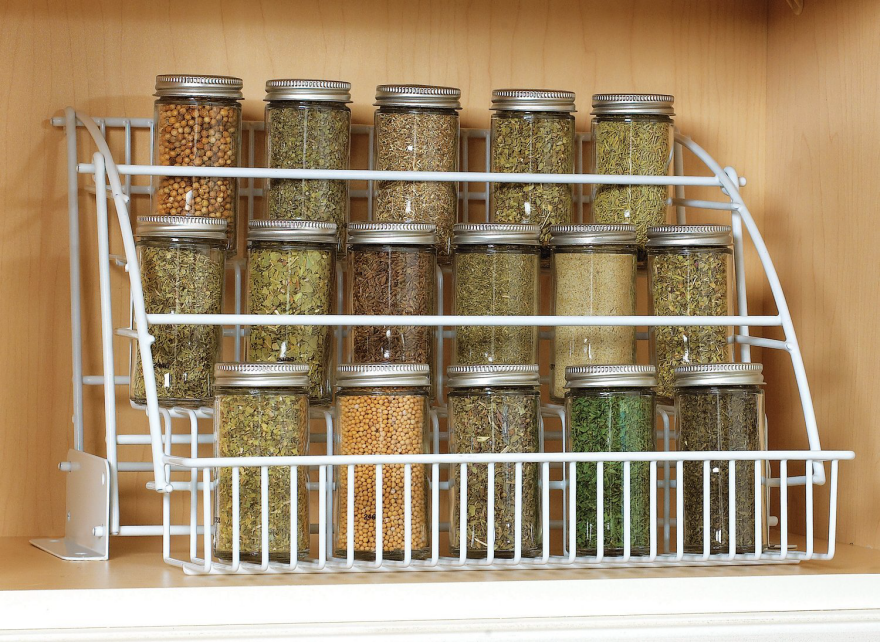Countertop and wall-mounted spice racks abound, but a cook who wants or needs something different can find many designs that are somewhat out of the ordinary. Herbs and spices are best stored away from heat and light, and many cooks lack counter space, anyway—so good cabinet storage options are helpful.
The Rubbermaid pull-down spice rack won't fit into all cabinets, but cooks who have large enough cabinets—especially cooks like me who are on the short side—really like this rack. It accommodates a wide range of spice bottles sizes, which is always a concern. A number of purchasers said installation was a bit tricky, but well worth the effort. (Providing clear instructions if the installation process isn't totally obvious is always a good idea.)
The SpiceStack from YouCopia provides similar benefits, except the end users can't see all the spices at once. But the racks come with removable stickers (both preprinted and blank) to apply to the drawers so cooks can tell what's where. This rack nicely accommodates half-height spice bottles, which many spice racks don't.
The SpiceStack comes in five widths, so there's one to fit almost any cabinet. And there's no assembly to worry about! The racks have non-skid feet to keep them in place.
The racks from Vertical Spice provide another way to avoid back-of-the-cabinet non-visible spices. They come in three depths and a range of heights, so there will be something to fit many cabinets.
Purchasers consistently comment on the quality of the materials—the racks have full-extension ball bearing slides—and the ease of installation. This is another product that will accommodate spice bottles with a wide range of shapes and sizes. (I see a bottle in that photo that's one of the larger ones I own, and it fits into this rack just fine while it barely fits into mine.)
The SpiceStor fits a lot of spices into a narrow space; it comes in a "full page" and a "half page" size to accommodate differing needs. It also has some flexibility; it can hang in a cabinet or stand on a pantry shelf. However, it can only be used for round bottles, and some spice bottles are square. Also, some purchasers saidthe clips didn't hold well, especially for glass jars; another said the clips "stretch out and drop the jars of spices." When the fundamentals don't work well, end users won't care about much else.
Other designs provide for under-cabinet spice storage. The Ultimate Spice Rack is a simple design, well executed, that will work nicely for cooks without cabinet space to spare.
The Magic Spicer uses bottles with magnets in the lids to attach to the magnets in the under-cabinet mounting plate. (Because there are individual magnets in the plate and the lids, the bottles will always line up neatly; that will delight some end users.) This is one of the many spice racks that require the end user to transfer spices from the containers they came in to the bottles the rack uses. For some end users that will be a trivial thing (especially those who buy in bulk) but for others this extra step will be a stumbling block. Also, glass bottles sitting out in the open aren't the best way to keep the herbs and spices fresh.
![]()
With the Magic Spicer, the end users decide on the hole size they want for each lid, and then hang it from the plate with the holes open to that size; the bottles are supposed to self-seal. This allows the cook to just pick up the jar and shake. That won't help the end user who wants to use a measuring spoon inserted into the bottle, but it's another feature that some might like.
The KitchenArt Auto Measure Spice Carousel can sit on a countertop (and can be double stacked) but it can also be mounted under the cabinet. Each dispenser has a shaker port, a large-mouth port which accommodates measuring spoons, and an auto-measure dial which dispenses a quarter teaspoon of spices with each turn of the dial. It comes with 44 stick-on labels and six blank ones. The one significant concern noted by some purchasers is that the dispensers don't seal well, which can be a major problem; airtight containers are best for preserving herbs and spices.
![]()
Spice racks can also go on cabinet doors. The Rev-A-Shelf adjustable door mount spice rack allows the end user to place the racks so they don't interfere with any cabinet shelves. And the door mount brackets are adjustable; the end user can position the mounting screw so it goes through the thickest part of the cabinet door. One potential drawback: If the bottles don't completely fill up the shelves, they might rattle around when the door is opened and closed.
The Bellemain Spice Gripper Clip Strips would avoid the rattling-around problem, but they have some of the same limitations as the SpiceStor. Many purchasers report they don't hold heavier glass bottles well, and some end users noted that once they are stretched to hold larger bottles they cannot be used later for smaller bottles.
This type of design seems to call out for plastic spice bottles, as shown in the product illustrations. If that was made clear in the product description, there would be fewer disappointed purchasers.
![]()
 Done for SOM - Beijing/China
Done for SOM - Beijing/China  Done for White - Lund/Sverige
Done for White - Lund/Sverige  Done for Snøhetta - Mekka/Saudi Arabia
Done for Snøhetta - Mekka/Saudi Arabia  Done for Zaha Hadid - Sharjah/UAE
Done for Zaha Hadid - Sharjah/UAE  Done for KPF - Daegu/Korea
Done for KPF - Daegu/Korea  Done for KPF - New York/USA
Done for KPF - New York/USA  Done for Gensler NY - Wasteland City/Wasteland
Done for Gensler NY - Wasteland City/Wasteland  Done for Gensler NY - Wasteland City/Wasteland
Done for Gensler NY - Wasteland City/Wasteland  Done for Jensen & Skodvin - Vals/Switzerland
Done for Jensen & Skodvin - Vals/Switzerland 

















































































































